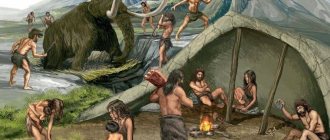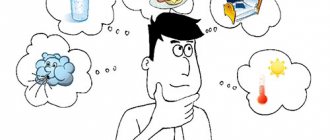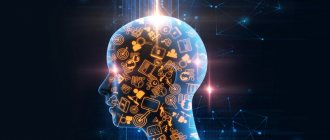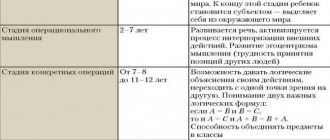The types of human activities are very diverse. Depending on various criteria, it is divided into practical, labor, educational, gaming, material, spiritual, moral, immoral, progressive, reactionary, and also includes creativity and communication.
It is known from the school social studies course that one of the main distinguishing features of humans, in comparison with highly organized animals, is considered to be purposeful activity as the constant fulfillment of certain tasks in order to change the world around us, which results in the creation of the so-called “second nature”.
Any activity is built on four main elements:
- object (an object that undergoes changes),
- subject (the one who performs the activity),
- goals (the intended result of an action),
- motives (reflects what a person’s will to action is based on).
Main types of human activities
These include material and spiritual. The purpose of the first is to change the surrounding reality, including nature and society. In turn, it is divided into production (the goal is to change natural objects) and social-transformative (the goal is to change and improve the system of social relations).
An example of the first type is the creation of goods for public consumption.
Social transformation manifests itself in various socio-political phenomena, such as: government reforms, revolutions, the creation of parties, participation in elections.
Spiritual activity seeks to change human consciousness both in the person of one person and the whole society. It is difficult to overestimate its influence on our lives. This type helps to unite people, orients each individual to find their own path and happiness.
This category includes:
- value (worldview),
- prognostic (future planning),
- cognitive (gaining knowledge about the world around us) activity.
The classification of material and spiritual activities into different categories is conditional.
In practice, these phenomena are nothing more than two sides of the same coin. Any of them involves material embodiment, and is based on planning, defining goals, methods and ways to achieve them.
5-11 GRADES
Let's read the information
.
activity
is a type of human activity aimed at understanding and creatively transforming the surrounding world, including oneself and the conditions of one’s existence. Human activity is of the nature:
- conscious - a person consciously determines the goal and foresees the result.
- productive – a person directs activity towards obtaining a result (product).
- transformative - a person in the process of activity changes the world around him and himself.
- social – in the process of activity, communication occurs, and various relationships arise with other people.
Depending on the variety of needs of man and society, the variety of types of human activity also develops. Based on various grounds, types of activities are distinguished: I.
Depending on the characteristics of a person’s relationship to the world around him (or according to objects and results): 1.
Practical (material) activity
- activity that is associated with the creation of things necessary to meet the needs of people, material values.
- material and production – activities to transform nature.
- social-transformative – activities to transform society.
2. Spiritual activity
– activity that is associated with the creation of ideas, images, scientific, artistic and moral values. A) cognitive - activity related to the reflection of reality in artistic and scientific form, in myths and religious teachings. Cognitive activity includes all types of human knowledge:
- sensory - cognition through sensation, perception, representation.
- rational – knowledge associated with forms of rational knowledge (concept, judgment, inference).
- scientific knowledge is knowledge that is guided by the principle of objectivity, validity of knowledge, systematic knowledge and verifiability of knowledge.
- artistic – knowledge through art (associated with the use of artistic images).
- everyday (ordinary, practical) - knowledge that is acquired in everyday life and activity.
- personal – knowledge that depends on a person’s abilities and the characteristics of his intellectual activity.
- mythological - knowledge, which is a fantastic reflection of reality, is an unconscious artistic processing of nature and society by folk fantasy.
- religious - knowledge that is determined by the direct emotional form of people’s relationship to the earthly forces (natural and social) that dominate them.
- parascientific - knowledge that does not meet generally accepted criteria for constructing and justifying scientific theories, as well as the inability to give a convincing rational interpretation of the phenomena being studied.
B) value-oriented - activity associated with people’s positive or negative attitude towards the phenomena of the surrounding world, the formation of their worldview. C) prognostic – activity related to planning or anticipating possible changes in reality. II
. Depending on the results obtained, the activity can be characterized as
- creative - activity that brings positive results.
- destructive - activity that brings negative results
III
. From the point of view of the significance and role of activity in social development:
- reproductive - an activity in which an already known result is obtained or reproduced using known methods and means.
- productive (creative) - activity that is aimed at developing new goals and new means and methods corresponding to them, or at achieving known goals with the help of new, previously unused means.
IV
. Depending on the public spheres in which the activity is carried out:
- economic - activities associated with the processes of production, distribution, exchange and consumption of material goods - production and consumer activities.
- political – 1. Activities of government bodies, political parties, social movements in the field of relations between social groups, aimed at integrating their strengthening with the aim of strengthening political power or seizing it.
2. Activities in the field of relations between states in the international arena - state, military, international activities.
- spiritual - activities related to the creation of spiritual values, their preservation, dissemination and development - scientific, educational, leisure.
- social – activity related to transformation, expedient change of society and one’s social essence.
V.
_ Depending on the characteristics of human activity
- external - activity that manifests itself in the form of movements, muscle efforts, actions with real objects.
- internal - activity associated with mental (mental) operations.
There is a close connection and complex dependence between these two activities. Internal activities plan external ones. It arises on the basis of the external and is realized through it. Let's look at examples of material and production activities
.
- mining and transportation of minerals
- production of ferrous and non-ferrous metals
- mining and beneficiation of ferrous metal ores
- production of chemical and petrochemical products
- production of reinforced concrete products
- production of steel and cast iron pipes
- repair of gas field and linear equipment
- construction of new facilities: railways, housing, schools, hospitals, cultural institutions and consumer services
- production of machinery and equipment
- production of building materials
- production of light and food industry products
- production, transmission and sale of electricity
- wood harvesting and processing
- production of pulp, paper, cardboard
- production of consumer goods from various types of raw materials
- food production
- animal meat processing
- extraction and processing of fish and other seafood
- processing of plant, animal, artificial and synthetic fibers into yarn, threads, fabrics
- production of clothing and other garments
- shoe making
- production of fine ceramic products
- growing grain, fodder, technical plants
- raising large and small livestock
Let's complete online tasks (tests). Option 4 Option 5 Literature used: 1. Unified State Exam 2009. Social studies. Directory / O.V. Kishenkova. – M.: Eksmo, 2008. 2. Social studies: Unified State Exam-2008: real tasks / author-comp. O.A.Kotova, T.E.Liskova. – M.: AST: Astrel, 2008. 3. Social science: a complete reference book / P.A. Baranov, A.V. Vorontsov, S.V. Shevchenko; edited by P.A. Baranova. – M.: AST: Astrel; Vladimir: VKT, 2010. 4. Social studies: profile level: academic. For 10th grade. general education Institutions / L.N. Bogolyubov, A.Yu. Lazebnikova, N.M. Smirnova and others, ed. L.N. Bogolyubova and others - M.: Education, 2007. 5. Social science. 10th grade: textbook. for general education institutions: basic level / L.N. Bogolyubov, Yu.I. Averyanov, N.I. Gorodetskaya and others; edited by L.N. Bogolyubova; Ross. acad. Sciences, Ross. acad. education, publishing house "Enlightenment". 6th ed. – M.: Education, 2010. Internet resources used: Wikipedia – free encyclopedia Back to section
Social transformative activities
The main goal is to change the structure of society and social phenomena. The subject is a society, class, group or individual.
They carry out actions and tasks that are important for society, pursue public interests and goals, using economic, political, and ideological tools for this.
Activity structure
Human activity is the active processes of influence of the subject (the one who performs the actions) on the object of the surrounding reality (the phenomenon that is subject to change). These processes are focused on the creative transformation of the world and the achievement of certain goals.
The following basic concepts can be distinguished:
Subject – a person, a group of people, an organization performing an action.
An object is an object or phenomenon that is affected by an activity. Objects can be: an individual, a group, a society; social processes, nature.
Motive is an incentive to action. These are feelings, principles, ideology, mentality.
The goal is what the subject of the activity ultimately strives for, the desired, intended result.
Facilities . These include techniques, technologies, techniques, tools that help achieve intentions.
The process of activity is the steps leading to conscious achievement.
The result is a product, a work of labor.
Spiritual activity
This category involves transformative processes regarding human consciousness, which implies:
- impact on creative thought and scientific knowledge,
- formation, change of outlook on life,
- planning for future events.
A person’s spiritual life is based on:
- scientific,
- creative,
- religious activities.
The second includes artistic, musical, acting, architecture, and directing.
Practical activities
This variety is aimed at creating or changing material things and the environment. Man produces certain objects, changes their appearance or properties, and influences nature.
This includes:
- sewing clothes;
- creation of equipment at the plant;
- deforestation;
- construction of houses.
That is, all material goods and everything that exists on the planet thanks to society.
Social activity
One of its manifestations is political activity, which is based on public administration. The lives of people involved in social processes are necessarily influenced by political parties and government decisions.
They, in turn, are influenced by various forms of people’s participation in the political life of the country, with the help of which citizens express their will and civic position, and present their political demands to government officials.
Creative or productive activities
Creativity is a transformative activity that results in a new product. A work of creativity is unique, has spiritual and material value, brings new knowledge, inventions, works of art.
The process of creative activity:
- combining technologies and creative work tools;
- inclusion of imagination, creation of mental images in the imagination of the subject of activity;
- the presence of imagination, the ability to consciously and unconsciously draw vivid and unusual images and situations in the imagination;
- intuition is the ability to foresight, comprehending the truth not through inference and logic.
A creative person is endowed with special abilities. But despite this, creating something new requires persistence, perseverance, and efficiency. Achieving a goal requires work and experience. Creative intuition only works when the stages of preparation, reflection, hard work and testing have been completed.
Prognostic activity
It represents the construction of a model of future actions and events, an assumption about possible changes in reality. The source of this type of activity is human fantasy, which precedes reality and builds a model of the future.
The design results are:
- plans, tables, diagrams for inventions and various building structures,
- ideal models for social change,
- ideas of new forms of state and political structure.
Communication and communication
Communication is a form of interaction between people aimed at exchanging information and establishing relationships. Verbal communication occurs through speech, non-verbal communication occurs through facial expressions, gestures, and posture.
Communication functions
Communication functions include:
- socializing—forms personal qualities;
- broadcast—receiving information;
- emotional—allows you to understand your partner on an emotional level;
- identification - allows you to classify the interlocutor as a member of any group of people, identify yourself with it or oppose it;
- integrative – uniting people.
Types of communication
Types of communication are divided into
- direct – subjects are real, are in direct contact, communicate using speech and non-verbal signals;
- indirect – subjects are separated by time (correspondence) or distance (telephone conversation).
The leading activities are play, communication and work
The game is characterized by performing real actions through imaginary means.
Communication is the process of transmitting information as a result of interaction. People are forced to contact each other in order to satisfy the need for joint activities.
It consists not only in the exchange of information, but also in the transfer of emotions, experiences to each other, the manifestation of one or another attitude towards people and things, the expression of an assessment of the behavior of others, their actions.
Work is aimed at obtaining results that have practical benefits.
What is an activity?
Activity is the purposeful and active influence of a certain subject of reality on a certain specific object, while this influence allows the subject to achieve a certain goal, thus satisfying his needs. Therefore, the activities involve:
- Subject , i.e. the actor himself, the person who is the source of activity;
- Object , which refers to the passive and inert side, and the subject’s influence is directed towards it. The object can be an inanimate object or thing, and other people (for example, students are subjects of educational activities), and the person himself, acting simultaneously as both the subject and the object of his own activity (for example, during training hours or self-study).
The content of an activity will not be determined only by the need that gave rise to it. The need only pushes the individual to begin active actions, but the content of these actions and the forms of their manifestation determine the goals, experience and requirements of a particular person or society.
Labor and other transformative activities are a prerequisite for the development and very existence of people and society; they are the ones who created modern man, his history, culture and science. In addition, there is an inextricable connection between activity and man; they cannot exist without each other. Man is the only species on Earth that has learned to transform the environment, and not just adapt to its conditions . For example, many centuries ago, people began to engage in agriculture and animal husbandry, and not just appropriate food through gathering, hunting and fishing.
The basis of activity is creativity and constructive activity, allowing people to go beyond the capabilities allocated to them by nature and create something fundamentally new, unknown to previous generations. By transforming his environment, a person not only changes himself and the world around him, but also establishes contacts with other people, adopts their experience and skills.
Types of human professional activity
Professional activity is characterized by organization, in most cases it is monotonous, and is regulated by standard rules. The person who carries it out has detailed, deep information and practical skills in a certain field of knowledge.
The results of such activities are of great social significance, as they affect the lives of many people.
The concept of “profession” includes various types of activity. In total, there are five types of professional activity:
- Man-technology. Human work with mechanisms, materials, energy.
- Man-man. Education, training, service, leadership.
- Man-nature. Interaction with the five kingdoms of living nature (animals, plants, fungi, viruses, bacteria), as well as objects of inanimate nature (minerals, minerals, etc.).
- Man-signs. Working with numbers, languages, signs.
- Man artistic image. Creating music, literature, acting, painting, etc.
Material activity
Associated with changes in real objects of the surrounding world that can be seen or felt. The results have meaning for one person or a large group of people.
This includes:
- agriculture;
- production of parts in factories;
- cooking.
Creativity also has a material side, as artists can create paintings or sculptures.
Progressive Activity Example
Depending on the consequences the activity had on the course of history, the development of the state and society, progressive (involves development, improvement, creation) and reactionary (destructive) activities are distinguished.
As an example of progressive activity, one can cite the industrial transformations of Peter I, the abolition of serfdom by Alexander II, as well as the reforms of P. A. Stolypin.
Reactionary activity
Such actions have a negative result, which led to decline. This effect is assessed on a historical scale. Therefore, sometimes the same action can belong to different types at different times.
Examples include the beginning of World War II or the introduction of the oprichnina. These events led to large-scale negative consequences.
Collective activity and its examples
Activities are divided into separate groups depending on the number of subjects performing them. The opposite of collective activity is individual activity.
The first is based on the unification and coordination of the activities of each member of the team. The task of integration lies with the manager. Management effectiveness is assessed based on production results. In this case, an important role is played by the psychological factor, namely the personal qualities of the manager, on which the labor efficiency of the team depends.
In addition, the effectiveness of the team’s activities depends on the quality of interpersonal relationships, well-coordinated work, and the psychological compatibility of participants in work activities.
A striking example of collective action is the construction of the Great Wall of China.
Forms of activity: work, play, study
Through play, study and work, the socialization of the individual occurs. Each form of activity is most typical for a certain age. In childhood, personality develops through play; in school and adolescence, a person gains knowledge and skills that prepare him for adult life. In the process of work, the individual becomes more conscious and independent.
Labor as a form of activity
Labor is a form of activity aimed at generating objects of material and spiritual culture, getting what you want, transforming life (habitat).
Labor has only its own inherent features:
- feasibility (necessity, importance);
- focus on achieving the task;
- a set of knowledge and skills that make it possible to achieve a goal;
- utility (usefulness of the resulting product);
- personal growth;
- getting what you want;
- change in personality, society, environment.
Types of labor include the following:
- Physical labor, which involves the musculoskeletal system, expends muscle energy. Such work can be completely manual, mechanized (using mechanisms), automated (the work is performed by machines, a person controls them).
- Brainwork. The load falls primarily on the brain. Mental work is associated with increased attention, sharp thinking, and good memory. It is necessary to assimilate, process and reproduce a large amount of information.
- Mixed work. Requires a combination of mental and physical effort. Such professions include those that a person receives in secondary specialized educational institutions. These are working professions - mechanic, service technician, cook, nurse, seamstress, salesman, driver, trainer.
Game as a form of activity
Game is a form of unproductive activity aimed at the process rather than the result. Its goal is not to create a socially significant result. The object of the game is a person, and its result is aimed at shaping his personality, assimilation of traditions, customs and norms of society.
For children it is a way to explore the world. The child is free to express himself through play, he shows emotions, and learns social experience.
For adults, play can be a form of leisure and entertainment. But he can simulate industrial, psychological situations and, in a safe environment, develop the necessary norms of behavior.
Features that distinguish play from other forms of activity:
- conditional situation (fictional circumstances and distribution of roles in them);
- the presence of rules (the game follows certain rules that allow the participants in the game to interact with each other);
- the presence of substitute objects (a stick is a gun, a doll is a child, a ball is the sun), the meaning of which is agreed upon between the participants in the game;
- goal setting (satisfying interest, need for rest, developing a skill);
- personality development (mental qualities, practical skills).
Training as a form of activity
Study (training) is a form of activity aimed at understanding the world, acquiring knowledge and skills required for independent life. When learning, the thinking and consciousness of the individual develop. The purpose of study is to change the subject of activity, not the environment. This is the difference between learning and communication, work, where personality change is only a consequence, not a goal.
Main features of training:
- the formation and development of man, the development of a worldview;
- studying the achievements of previous generations;
- mastering knowledge and skills at a professional level;
- comprehension of cultural values.
Types of training include:
- Organized learning is cognitive, aesthetic, labor activity, implemented in educational institutions of basic secondary, secondary special and higher levels.
- Unorganized learning is a secondary product of other activities (work, play).
- Self-education is an active activity of an individual aimed at increasing the store of knowledge. Determined by self-selection. The motive for self-education is personal interest in science, culture, and social life.
Target
Each person in the field of his work receives a certain result. This is called the purpose of professional activity. Not every specialist knows how to organize work correctly. Without this it is impossible to become a professional.
Even from school, the student sets a goal for himself. First, he enters a higher educational institution in the department that he likes. After studying, he goes to work and sets himself the goal of achieving great results in his professional activities.
To do this, you need to continue studying, work hard and constantly be interested in everything related to a specific specialty. To achieve the planned results, ask yourself questions: “Why am I doing my work?”, “What does it give me?”, “How should it turn out in the end?”
Professionalism is achieved only by a person who likes his work. If you don’t care where you start working, just to get experience and salary, then you won’t be able to achieve great success in your field of activity.
To achieve the necessary results, you need to properly plan your activities:
- Set yourself a task and continue to work on solving it.
- Determine the methods and establish what means you need for your goal.
- Plan the final result.
- Find out who from the team will help you solve a specific task or problem in the workplace.
In order to carry out your plans and achieve your goal, you need to use all your strengths and methods, only then do you have the opportunity to become a real professional.
Pedagogical activity
Every person learns throughout his life. Professional teaching activity is a very important specialty in schools, colleges, and higher educational institutions. A teacher must improve his qualifications every five years. His professionalism depends on this. The goal of a teacher is to educate and teach a person everything new. It is the teacher who helps many students become specialists in their field.
The professional activity of a teacher organizes students, helps solve problems of various types of complexity, and determines the goal for which it is necessary to develop and learn. The teacher must have an emotionally stable character and his own position.
In order to become a professional, the following requirements are put forward to the teacher:
- Psychological readiness. Not all students are decent and obedient people. Therefore, you need to be prepared for the fact that you will have to remain a calm and balanced teacher even in stressful situations.
- Physical readiness. A teacher has a lot of work, for which high demands are made. Therefore, the teacher must be physically healthy.
The work of a true professional teacher is calm and balanced. The teacher must be wise and educated. He cannot answer to his pupils or pupils that he does not know something due to his specifics. Only in this case is professional pedagogical activity determined. This is the only way to earn authority.
Factors that influence the effective performance of professional activities
Every person is ready to work if he has an interest in work. In order for professional activity to come first, motivation for success is necessary. If a person sees meaning in the future, then he will strive for improvement.
There is an opinion that there are two factors that will help stimulate an individual to professional activity:
1. Material factors.
- An agreement is concluded on the binding of material remuneration. If employees are stimulated financially, then work efficiency will be increased. This affects the material well-being of the entire enterprise as a whole.
- Bonuses for employees. If a person knows that he will receive a bonus for a job well done, then he will give his best in his professional activities.
- Increase in salary for qualifications. Additional funding for the best employees will provide an incentive for other people to work better.
- Providing benefits. It is more pleasant for every person to work if travel or food (partially or fully), trips to the sea, and camp sites are paid for.
2. Psychological factors.
- Celebration organization. Employees will be happy to relax with colleagues after working days. These days they are happy not to think about work, but to communicate with each other on abstract topics.
- Writing certificates and thanks stimulates a person to work. He understands that he brings benefits to his enterprise. This increases labor productivity.
- The regime is not only for work moments, but also for rest. Every employee is pleased to know that at the workplace he can not only work, but also relax.
- Professional growth (career). If a person knows that improvement awaits him in the future, he will be able to strive for improvement. To do this, it is necessary to create the necessary conditions for employees: update knowledge and skills (organize a variety of courses and trainings to improve their skills).
- Professional activity involves creating conditions for friendly relations with colleagues. A good team atmosphere will make work more enjoyable.
Ensuring professional performance will help employees adhere to these factors. As a result, you will be able to increase profits at the company, as well as improve product quality, prestige and labor potential through friendly relations in the team.










